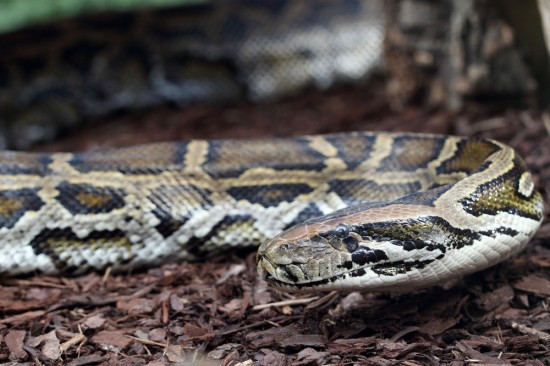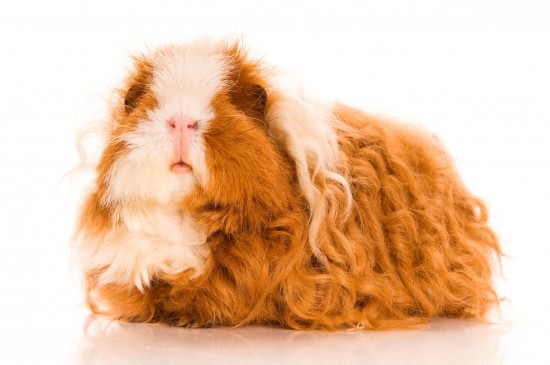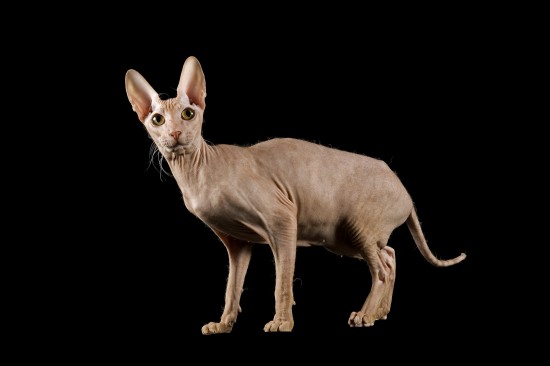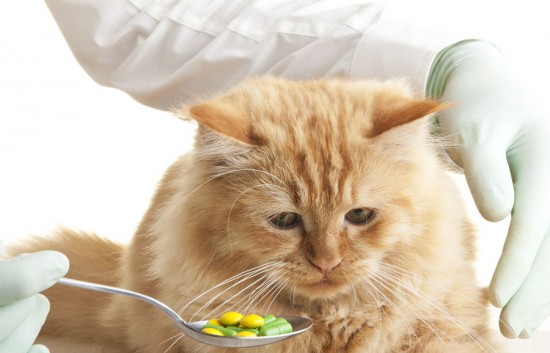

Snakes are relatively hardy low maintenance animals when kept in the correct environment, and require little day to day care other than feeding and cleaning out the tank as required. However, like all animals, they can still become sick or injured despite our best intentions to prevent this.
Here is a quick reference guide to what to look for in a healthy snake, and how to tell if your pet is having any problems.
Healthy snakes should appear active and alert with a rounded full body from good nutrition, and be eating regularly and without problems. Your snake should have smooth, shiny undamaged skin, and their eyes, nose and mouth should be clear and free from any muck or discharge.
Discharge from the eyes or nose, regurgitation of food, the body appearing to be thin and not full, lethargy, and decreased appetite are all warning signs of ill health in your snake. Also check that the appearance of their urine and faeces has not changed, as this can be another indicator of a potential problem.
You may be surprised to learn that snakes can suffer from constipation. How long it takes for your snake to digest and metabolise his food will vary according to his age, size and weight, so you should pay attention to your own snake’s usual digestion cycle and be alert for any abnormalities within it. If your snake is suffering from constipation, he may begin to appear bloated, and become understandably lethargic and uncomfortable. Check the cage for any uneaten food, which can be another sign that your snake’s digestive system has temporarily stopped.
If you suspect that your snake is constipated, bathing him in warm water for around fifteen minutes at a time a couple of times a day can often help to get things moving. If this does not prove effective or you notice any swelling in the abdominal region, you should take your pet to a specialist exotics vet for assistance. If your snake has a significant build up of hard impacted faeces that he is unable to pass normally, then surgical intervention may be required to remove this. Left untreated, acute constipation without relief can be fatal to your snake.
Inclusion body disease or IBD is one of the most serious conditions found in pet snakes, but it is exclusive to the Boid family of snakes, including pythons and boa constrictors. Symptoms vary from snake to snake and not all snakes will develop all of the symptoms. Be on the lookout for unresponsiveness, regurgitating food, dilated pupils and unusual behaviour such as the snake being unable to right itself from on its back, which is indicative of a neurological disturbance.
If you suspect your snake is suffering from IBD, you should isolate him from any other tank mates right away, as the disease is easily transmissible. Any housing or equipment which the affected snake has come into contact with should either be replaced or thoroughly disinfected to avoid passing on the disease to any current or future snakes you may keep.
There is no treatment for the disease, but you should consult your vet for a definitive diagnosis and advice on how to ease any pain.
When you buy a new snake, you should always quarantine them away from any other reptiles for ninety days in order to allow any symptoms of IBD to develop, if present, and so avoid passing it on to other snakes.
Another important reason for quarantining newcomers is the possible presence of internal parasites, which can be contracted from prey or via contact with affected snakes. Vomiting, poor appetite and general lethargy can indicate the presence of parasites. In order to diagnose parasites, take a faecal sample from the affected snake to your vet for testing, and your vet can then prescribe a suitable worming treatment or medication to eliminate them.
Both handling your snake too soon after he has eaten, and general stress can both cause vomiting in your pet. You should not handle your snake for 48 hours after he has fed, in order to allow the digestive process to run its course.
If your snake is sick regularly or for a prolonged period of time, or for no apparent reason, seek veterinary advice.
A clean, stress free living environment for your snake can go a long way to preventing general ill health and stopping any respiratory conditions from developing, so good husbandry is required at all times. If you notice your snake wheezing when he breathes, breathing with an open mouth, coughing or suffering with a runny nose, then your snake may have contracted a respiratory illness. The first course of action in this situation is to raise the overall temperature of your snake’s tank, in order to attempt to kick start the appropriate immune response from your snake. You should also quarantine your snake away from others to prevent possible transmission of any infection.
If your snake is suffering from a minor infection or breathing problem, this may correct itself, however if the problem appears severe, protracted, or worsens rather than improving, you will need to take your snake to the vet.
Stomatitis, sometimes referred to as ‘mouth rot’ is caused by the bacteria naturally present in the mouth entering an open wound, which causes infection and inflammation of the entire digestive tract, from the mouth right down to the stomach. This is unfortunately a relatively common illness found in pet snakes.
Symptoms of stomatitis include swelling and discolouration around your snake’s mouth and gums, gaps showing when the snake closes his mouth, and repeated rubbing of the head and mouth on hard surfaces.
Quarantine any affected snake and clean around the mouth and affected areas with a Betadine dilution, taking care that your snake does not ingest any of the solution. You will also need to thoroughly clean and disinfect their tank and any contents regularly during the course of treatment, to prevent re-infection.
If the condition of your snake does not begin to improve within one week of treatment, seek veterinary advice.
Problems with shedding, cuts and grazes, mites and other skin conditions can all occur in pet snakes, and you should make yourself aware of any possible symptoms in order to act quickly upon identifying a potential issue. Numerous skin conditions and problems can potentially be found in pet snakes, and this is covered in a separate article.
 10 Unusual & Charming Breeds Of Guinea Pigs
10 Unusual & Char
10 Unusual & Charming Breeds Of Guinea Pigs
10 Unusual & Char
 Playful Breeds Of Dogs
Playful Breeds Of
Playful Breeds Of Dogs
Playful Breeds Of
 The Delightful Peterbald – An Extraordinary Hairless Cat
The Delightful Pe
The Delightful Peterbald – An Extraordinary Hairless Cat
The Delightful Pe
 How To Give Your Cat Medicine
How To Give Your
How To Give Your Cat Medicine
How To Give Your
 Booking a Room in Pet Friendly Lodge - Check These Important Things First
Booking a Room in Pet Friendly Lodge - Check These Importa
Booking a Room in Pet Friendly Lodge - Check These Important Things First
Booking a Room in Pet Friendly Lodge - Check These Importa
Copyright © 2005-2016 Pet Information All Rights Reserved
Contact us: www162date@outlook.com